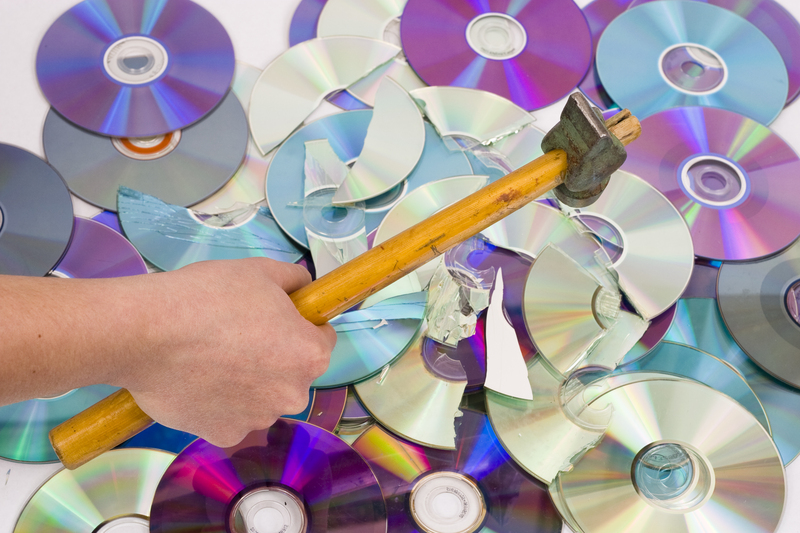Best Practices for Getting Rid of PPE Waste Responsibly
The global surge in the use of Personal Protective Equipment (PPE) -- face masks, gloves, gowns, and face shields -- especially due to the COVID-19 pandemic, has created a unique environmental challenge. PPE waste can be hazardous to both public health and the environment if not disposed of properly. It is essential for individuals, businesses, and organizations to understand and implement the best methods for the responsible disposal and management of PPE waste. This comprehensive guide will share the best practices for getting rid of PPE waste responsibly while supporting environmental sustainability and public safety.
Understanding PPE Waste and Its Environmental Impact
Before delving into the optimal ways to handle PPE waste, it is important to understand what PPE waste is and the dangers it poses. PPE refers to items intended to protect individuals from infections, chemicals, or hazardous materials. Common PPE products include:
- Surgical masks
- Respirators
- Disposable gloves
- Gowns and aprons
- Face shields and protective goggles
The majority of PPE items are made from single-use plastics such as polypropylene, polyethylene, and PVC, which take centuries to decompose. Improper disposal leads to accumulation in landfills, contamination of water bodies, and threats to marine and terrestrial wildlife. Additionally, used PPE can harbor infectious agents, posing health risks to sanitation workers and the public if not handled responsibly.

Why Responsible PPE Waste Disposal Matters
Responsible PPE waste disposal is vital for several reasons:
- Protecting Public Health: Used PPE can carry pathogens, increasing the risk of infection spread if not properly managed.
- Environmental Sustainability: Discarded PPE can pollute waterways, kill wildlife, and contribute to the global plastic crisis.
- Compliance with Regulations: Many countries have strict guidelines regarding the segregation and treatment of medical and hazardous waste.
Consequences of Irresponsible PPE Waste Disposal
Improperly discarded PPE can result in:
- Blocked drainage systems and increased urban flooding risk
- Visual pollution and harm to the aesthetic appeal of communities
- Increase in vector-borne diseases due to stagnant water in littered gloves or masks
- Microplastics entering the food chain, affecting human health
Best Practices for Getting Rid of PPE Waste Responsibly
Implementing best practices for PPE waste disposal requires coordinated efforts at the individual, organizational, and governmental levels. Here are effective strategies to minimize the environmental footprint and hazards associated with PPE waste:
1. Segregate PPE Waste Properly
Proper segregation is the cornerstone of responsible PPE waste management.
- Do NOT mix PPE with regular recyclables: Used PPE may be contaminated and should never be placed with paper, glass, or non-contaminated plastics.
- Designate Color-Coded Bins: Use clearly labeled and color-coded bins for PPE waste, such as yellow or red for biohazardous material.
- Maintain separate containers for reusable and disposable PPE to streamline cleaning and disposal processes.
2. Use Sealable Plastic Bags for Collection
To reduce the risk of contamination, always dispose of used masks, gloves, and other single-use PPE in durable, sealable plastic bags before placement in designated receptacles. Seal the bags tightly to minimize exposure to sanitation workers and others.
3. Label and Store PPE Waste Appropriately
If conducting PPE waste management in bulk (e.g., at workplaces, healthcare facilities, or schools), ensure every bag or container is clearly labeled as 'PPE Waste' or 'Hazardous Waste'. Store bags in a secure, ventilated area away from public access until collection.
4. Educate and Train Staff About PPE Waste Management
Training and awareness are crucial, particularly in environments with high PPE usage. Focus on:
- Proper disposal methods and the reasons behind them
- Use of personal hygiene practices during handling
- Emergency procedures in case of accidental exposure
Regular workshops, signage, and reminders can keep everyone informed and accountable for responsible PPE disposal.
5. Partner with Licensed Hazardous Waste Collectors
Engage with certified waste management companies that specialize in hazardous or clinical waste. They have the proper equipment for transporting, treating, and disposing of PPE waste. Look for services that offer:
- Regular pickups and secure transport
- Documentation for compliance and traceability
- Safe final disposal through incineration or autoclaving
6. Explore PPE Recycling Options
While many PPE items are not recyclable through standard municipal systems, innovative programs are emerging worldwide to address this gap. For organizations and individuals:
- Research local or international PPE recycling programs, such as TerraCycle, which accepts disposable masks and gloves.
- Encourage suppliers to provide products that are recyclable or made from biodegradable materials.
- Check with local governments about pilot projects for PPE recycling.
7. Incineration as a Last Resort
In cases where recycling is not possible, incineration in controlled, high-temperature facilities is a widely used method for infectious PPE waste disposal. This reduces the volume of waste and destroys pathogens. However, it should be noted that incineration can produce harmful emissions, so always opt for facilities that meet environmental standards and utilize pollution control technologies.
8. Avoid Littering and Public Bin Disposal
Never dispose of used PPE in open public bins, on streets, or in natural environments. Littering PPE poses a direct threat to cleaning personnel, wildlife, and the urban environment. Always look for marked disposal points, especially in medical or high-traffic public spaces.
9. Adopt Eco-Friendly Alternatives to Conventional PPE
To reduce the overall impact of PPE waste, consider investments in reusable and biodegradable alternatives:
- Cloth masks that can be washed and sanitized
- Reusable face shields and goggles that are easy to clean
- Gloves and gowns made from compostable materials
When responsibly cared for, such products can drastically cut down on single-use PPE waste generation.
Regulations and Guidelines for PPE Waste Disposal
Different countries and municipalities have established detailed guidelines on the proper handling of viral and medical waste, including PPE. For example:
- The Centers for Disease Control and Prevention (CDC) recommends that all PPE waste from healthcare settings be treated as regulated medical waste.
- The World Health Organization (WHO) publishes universal best practice standards for safe healthcare waste management, emphasizing segregation and safe destruction.
- Local authorities often provide specific guidance for household or community-level PPE disposal.
Always consult your local government or environmental agency for the most up-to-date regulations regarding disposing of PPE responsibly.
Community Engagement and Public Awareness
Tackling PPE waste is not solely the responsibility of businesses or governments. Public education campaigns play a vital role in shaping responsible behaviors. Communities can contribute to solutions by:
- Promoting the use of dedicated PPE bins in parks, transit hubs, and commercial centers.
- Organizing community clean-up drives and safe collection events.
- Disseminating information on social media about proper PPE disposal.
- Partnering with local councils to support innovative recycling or upcycling initiatives.
Widespread community participation helps ensure that responsible PPE waste management becomes the norm, not the exception.
Innovative Solutions and Future Trends
The environmental challenge posed by PPE waste has sparked innovation in materials science, waste management, and public policy. Here are some future-forward solutions for getting rid of PPE waste responsibly:
- Biodegradable PPE: Rapid advancements are being made in plant-based or compostable masks and gloves, reducing their long-term impact.
- PPE Recycling Machines: Machines that sterilize and shred PPE for conversion into fuel, construction material, or new plastics are entering the commercial market.
- Digital PPE Waste Tracking: Mobile applications and blockchain technology are now being used by companies and health authorities to securely track PPE waste from generation to disposal.
- Corporate Responsibility: More manufacturers are designing PPE with end-of-life management in mind, such as 'take-back' programs and incentives for returning used items.
Simple Steps for Households: Proper PPE Waste Management at Home
Individuals and families can make a significant difference by following these easy steps for disposing of PPE items responsibly at home:
- Place all used PPE in a dedicated, lined bin with a lid.
- Do not reuse single-use masks, gloves, or face shields.
- Carefully tie up full waste bags and do not overstuff bins to avoid spills.
- Wash your hands thoroughly after handling used PPE or waste bags.
- Never flush PPE items down the toilet, as this causes plumbing blockages and pollution.
Making PPE waste disposal a conscious and regular routine ensures that whether at home or in public, your actions support a healthier environment.

Conclusion: Embracing Responsible PPE Disposal for a Safer Planet
The responsible disposal of PPE waste is essential for protecting both human health and the planet. By following the best practices outlined above, individuals, organizations, and communities can greatly minimize the risks associated with PPE waste. This requires a collective effort--involving education, adherence to regulations, leveraging new technologies, and promoting sustainable alternatives.
Let us all strive to make responsible PPE disposal a part of our daily lives. In doing so, we not only safeguard ourselves and future generations but also contribute to a cleaner and more sustainable world. Stay informed, dispose of PPE waste responsibly, and spread the word to create a ripple effect of positive change.
FAQs About Responsible PPE Waste Disposal
- Can I recycle face masks and disposable gloves?
Standard municipal recycling systems do not accept most single-use masks and gloves. Check with specialized recycling programs in your area. - How should businesses manage large volumes of PPE waste?
Segregate the waste in dedicated bins, use secure bags, and partner with licensed waste collectors for safe disposal. - What are the dangers of littering used PPE in public spaces?
Littered PPE exposes others to infection, harms wildlife, pollutes waterways, and adds to the global plastic waste problem. - Are there alternatives to single-use PPE?
Yes. Consider cloth masks, reusable shields, and biodegradable items where safe and practical. - What steps should I take if I've handled potentially contaminated PPE?
Dispose of the PPE properly, wash your hands thoroughly for at least 20 seconds, and disinfect any surfaces the PPE touched.
By adhering to these best practices for getting rid of PPE waste responsibly, we can all play our part in combating pollution and supporting global health.
